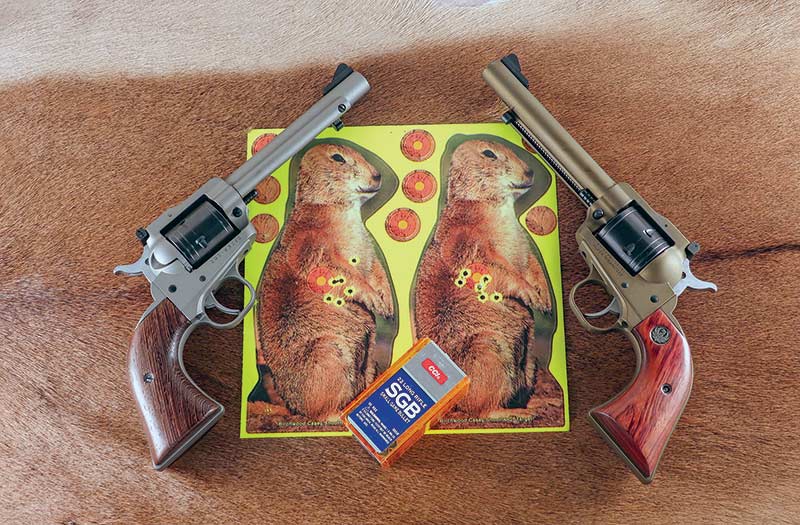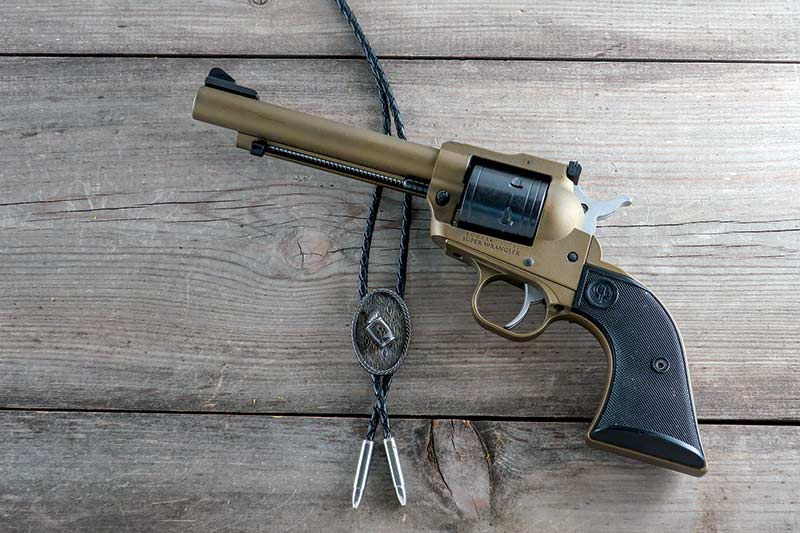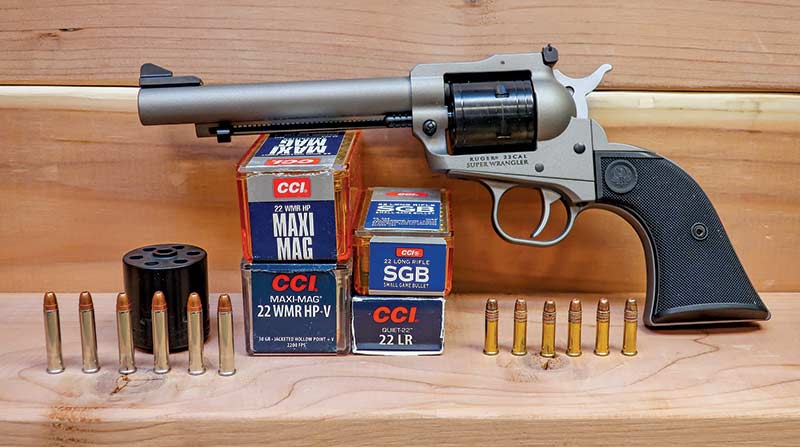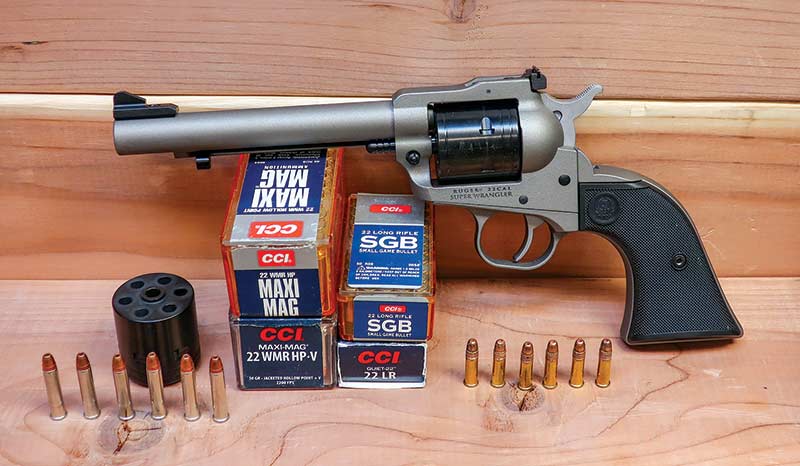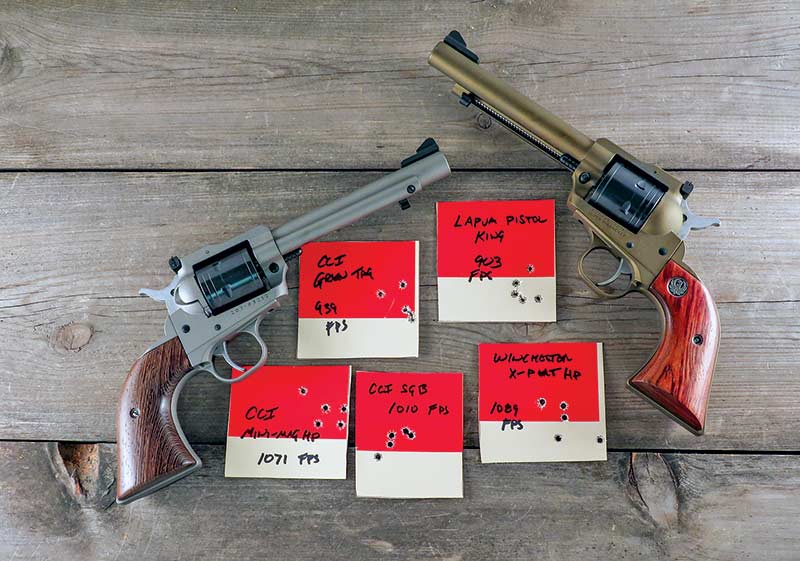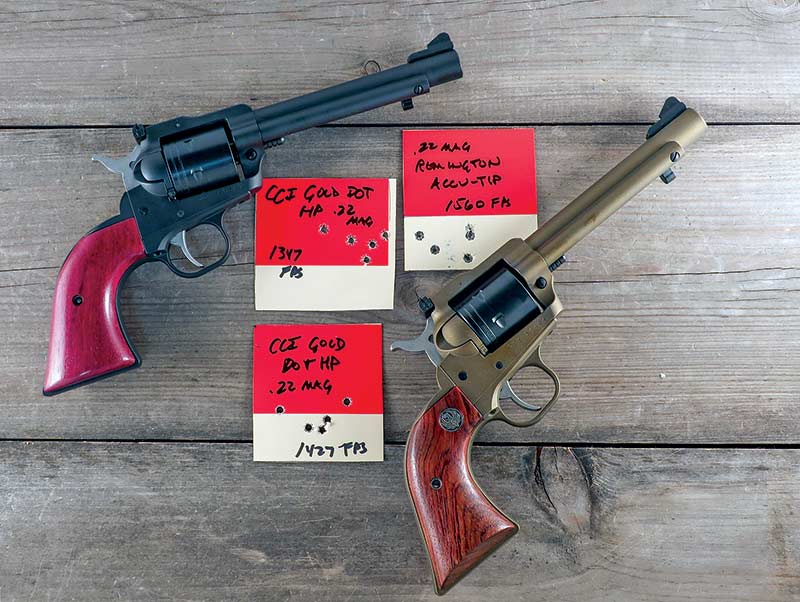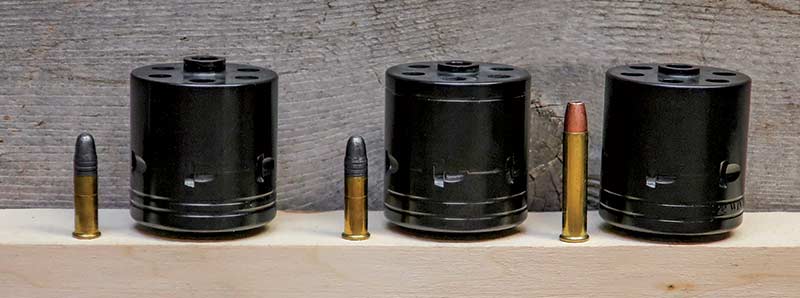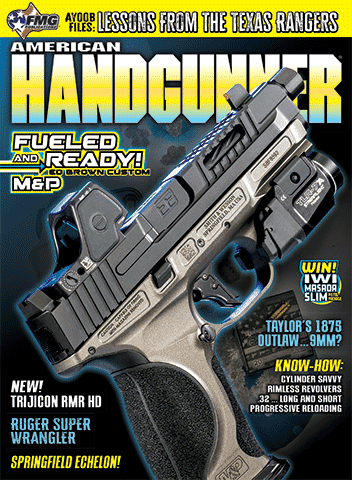Ruger’s Super Wrangler
That wonderful year was 1953. A young William Batterman Ruger changed the face of sixgunning forever. Four years earlier, he brought forth a .22 semi-automatic pistol for half the price of those being offered at the time, and it shot just as well or better. The year 1953 was also time to take another path — to resurrect the single-action sixgun. In the late 1940s and early 1950s, television swept across the country, and much of the airtime was taken up showing old Western movies. Viewers wanted single-action sixguns, and they were not to be had. Ruger stepped into the breach and offered the Single-Six.
Single Six Revolution
Bill Ruger always seem to read the pulse of the public perfectly and he certainly did in 1953 as he was wise enough to bring out a sixgun that operated and felt like a Colt Single Action Army. However, rather than chambering for an expensive-to-shoot centerfire cartridge, he instead scaled down everything but the grip frame to .22 size. The grip frame was virtually identical to the Colt Single Action and although the new Single-Six was a traditional single action with a flat loading gate that was opened to insert cartridges and an ejector rod for shuckin’ empties, the lockwork was redesigned to use all coil springs eliminating the breakage-prone flat springs of the Colt. The action was so strong that when a Single-Six was hooked up to a machine that would continuously cock and dry fire the single action .22 as a display at that year’s NRA Show, the machine finally broke. Bill Ruger now had a second winner on his hands.
Perhaps just to show he wasn’t perfect, Ruger changed the Single-Six and not for the better. The perfectly shaped Colt Single Action-style grip frame, which had been entitled the XR3, was changed to the XR3-RED, allowing more room between the back of the trigger guard and the front strap. For most of us, it was ill-conceived, and I have a parts box with the new grip frame and subsequent grips from several post-62 Rugers, for which I replaced those parts with the original design. To be fair, there are those who actually like the newer grip design; however, for me, the original just seems to fit my hand close to perfection and also delivered less felt recoil.
By 1964, 10 years after the Single-Six first appeared, it still was just a great little sixgun with three versions available: .22 Long rifle, .22 Magnum only and a Convertible with both cylinders. How could they possibly make it any better? The obvious answer was to look to the sights. All versions available still had the rear sight in a dovetail allowing it to be drift adjusted for windage while the front sight remained the standard Colt SAA style. By now, Ruger had a full line of Blackhawks, all with adjustable sights; it was time to bring the .22 Single-Six up to the same level. The result was the Super Single-Six, a Convertible Model with both cylinders and offered mainly with a 5½” or 6½” barrel, with the 4⅝” being rare.
The Wrangler
After offering the Single-Six for all these many years, someone at Ruger caught the same skill at reading the public pulse and came up with an alternative version of the .22 single action. The Wrangler has the basic Single-Six New Model lockwork and is also the same size. The original Ruger Single-Six was steel with an aluminum alloy grip frame. A Lightweight version of the Single-Six was also offered, and these are definitely collector’s items today.
The Wrangler has an aluminum alloy mainframe and a zinc alloy grip frame, while the cylinder and cold hammer forged barrel are steel. The cylinders are blued steel, and the hammers and triggers are a silver finish; however, the rest of the Wrangler is quite colorful. The main frame, grip frame, barrel and ejector rod housing are not blued, stainless steel, or nickel-plated, but rather they are Cerakoted, just as many of the polymer-framed semi-automatics offered today. There are three models available. One is black; the other two are more colorful in Silver or Bronze Cerakote. I’ve been a blued steel/exotic grip guide for a long time; however, I find these new Rugers quite attractive.
Newest Iteration
Now Ruger has done the same thing with the Wrangler that they did with the Single-Six in the 1960s — adding adjustable sights. The newest iteration of the Wrangler is offered with a 5½” barrel and an auxiliary cylinder chambered in .22 Magnum. When the Wrangler first appeared, it came with a warning not to try to fit it with a .22 Magnum cylinder because of the alloy frame. This Super Wrangler has a stronger steel frame, and the .22 Magnum and .22 LR cylinders are slightly longer than the originals, so the Magnum cylinder cannot be dropped into one of the original Wranglers. For now, at least, it is only offered in the one-barrel length but in all three of the original finishes.
The Super Wrangler has steel cylinders, steel barrel and now a steel mainframe. The grip frame is the same alloy as found on the original Wranglers, and the hammer and trigger are MIM parts. They are not interchangeable with the steel hammer and trigger found on the regular .22 Single-Six. As with all Wranglers and other Ruger single actions, the Super Wrangler Convertible is a New Model action with a transfer bar, which means it is safe to carry fully loaded.
All pre-New Model Rugers can only be safely carried with the hammer down on an empty chamber.
Ruger advertises the Super Wrangler will accept Single-Six grips. True? Yes, no, maybe. Going into my parts box, I tried several XR3-RED factory original grips as well as custom grips. They do fit, they feel more comfortable to my hand than the supplied plastic grips on the Wranglers, and they certainly looked better. However, the grip frames of the Wranglers are about 1/16″ longer and protrude below older grips. The bottom area of the backstrap also protrude slightly beyond the grip panel. I have several New Model steel grip frames in my parts box and am thinking of swapping these out for the grip frames that come with the Super Wrangler.
As they came from the factory, the Super Wranglers, just as the original Wranglers, have heavier trigger pulls than what I prefer. A Taffin Instant Trigger Job brought them down to right at 3 lbs. For test-firing, I went with 12 varieties of .22 Long Rifle ammunition consisting of both lead- and copper-plated versions, as well as solid and hollow-plated examples. Sixguns and rifles both can be picky when it comes to .22 Long Rifle ammunition, so I always try to come up with plenty of samples to try. The best loads I found to be CCI Green Tag with a muzzle velocity of 939 fps and a 1″ group; CCI SGB at 1,010 fps and the same group, while CCI Quiet .22, SK Pistol Match and Remington Yellow Jackets all came in at 1⅛” with muzzle velocities of 612, 865, and 1,145 fps. This makes both the SGB and Yellow Jackets the ones to reach for to use on varmints and small game. All targets were shot at 17 yards.
Switching to .22 Magnum loads, I had six varieties of ammunition at my disposal and I got the best overall results with all three sixguns using the Armscor HPs, which put five shots into 1½” with each of the three Super Wranglers with velocities running 1,248, 1,333 and 1,347 fps. My two most accurate loads were the Federal 50-grain HP giving a 1″ group with a muzzle velocity of 1,089 fps. My choice for varmints and small game is the 30-grain Remington Accu-Tip with a 1¼” group at the muzzle velocity of 1,560 fps — the fastest speed recorded. The Maxi-Mag HP is just slightly slower; however, nowhere near as accurate.
A wise man at Ruger once told a group of writers, “No matter what we make, someone wants something else.” And yes, I do want something else, and that is a Super Wrangler Magnum “Cavalry Model” with the same features as the current Super versions but with a 7½” barrel. Meanwhile, I will enjoy these 5½” Super Wranglers and the 7½” Wranglers until the two are blended. The Wrangler has proven to be a very popular small-bore sixgun, so we could see more versions. Hopefully!
The MSRP for the Super Wranglers is currently $329, while the Ruger Single-Six Convertible has a price tag of $799. Going with the Super Wrangler leaves a big chunk of money for buying ammunition without sacrificing any operational features. It also has a finish that matches up easily with hard outdoor use.

